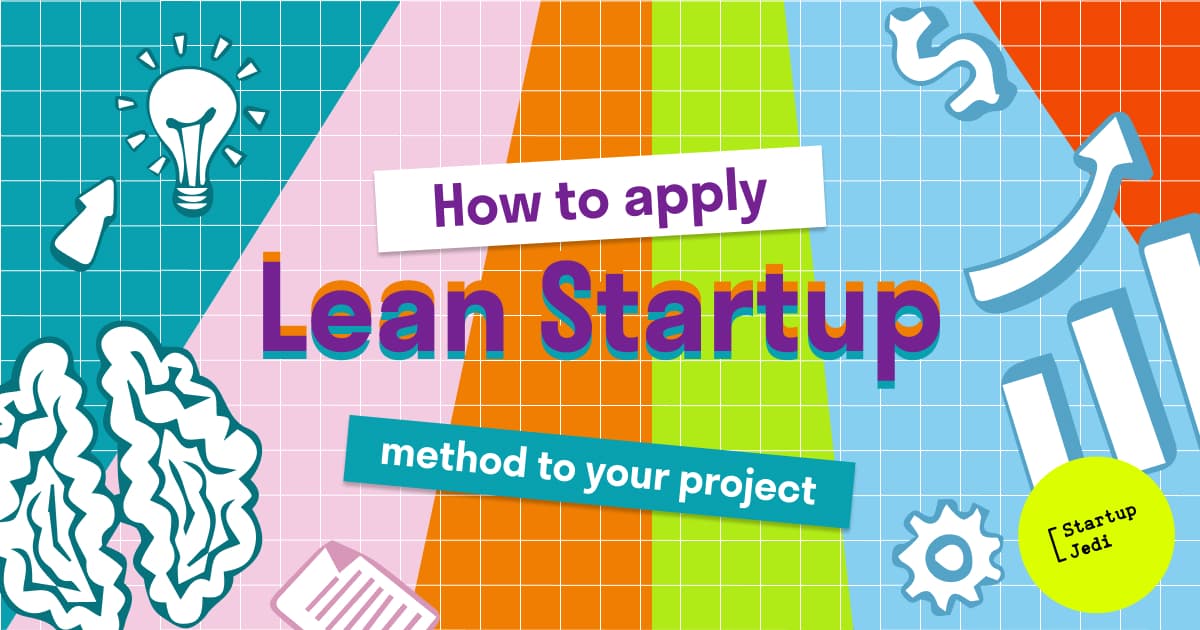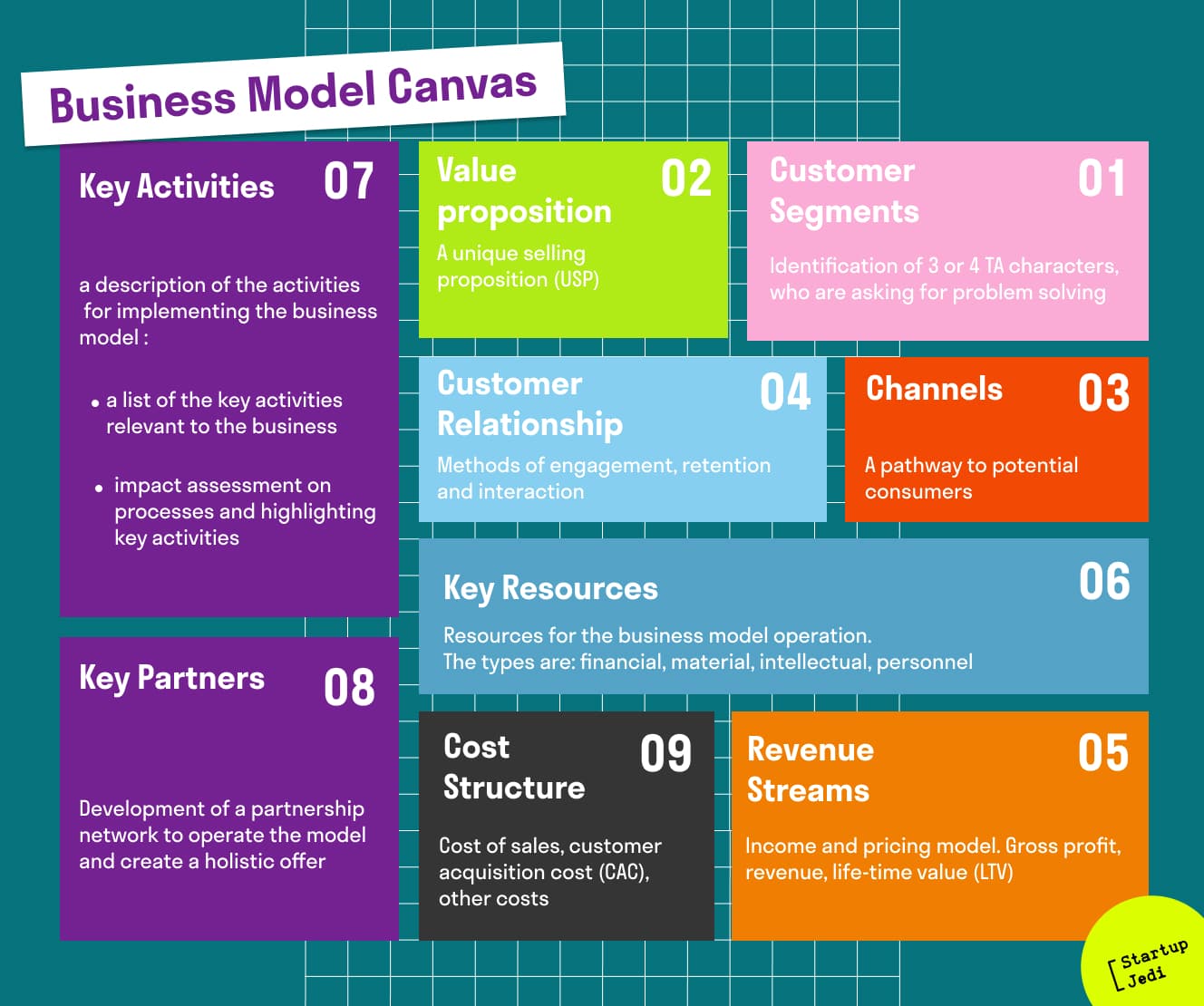
Startup Jedi
We talk to startups and investors, you get the value.
Lean Startup is an entrepreneurial methodology that involves creating companies, developing new products based on a scientific approach to management, constant experimentation and measurement of progress, focus on customer feedback and continuous product improvement.

Startup Jedi
We talk to startups and investors, you get the value.
The Lean Startup methodology takes a scientific approach to building an innovative business. Its author American entrepreneur Eric Rees came to the conclusion that the approaches that are used to launch and develop a traditional business cannot be applied when creating and launching a startup, as this is ineffective and leads to the failure of the project.

According to Eric Rees, a startup is a company that is created and operated in an environment of extreme uncertainty. Based on this, a startup needs to be as flexible as possible in order to learn from their own mistakes, quickly test hypotheses and, based on successful tests, make changes to the version of the product that is being developed.
To implement the Lean Startup method, startup founders should abandon careful planning of what the product should be. According to Lean Startup, the first goal of a company is to release an MVP. The prototype of the product does not have to be perfect and have all the features, but it needs to be a working version that gives a clear idea of the product.
The release of a prototype to the market allows you to achieve the next goal of a startup — to get customer feedback and based on it, finalize the MVP. Lean Startup assumes that the process of “releasing a product — collecting feedback — adjustments” can be repeated countless times. Thus, step by step, the company is getting closer to the version of the product that best meets the needs of the audience and the changing requirements of the market.
A “lean startup” cannot be implemented without “flexible” methodologies, which are gaining more and more popularity in the CIS: the team should switch to sprints and collect customer feedback on the product based on the results of each one. Thus, the drawback of the approach is the need for a constant rapid restructuring of the product idea, if it turns out that the initial hypothesis did not work.
Lean approach is achieved through agile methodologies and constantly testing new versions of the prototype with the audience. As a result you do not just release the product that the audience needs, but also avoid spending additional resources.
...
With Lean Startup, all product hypotheses are summarized in the form of a business model canvas, also known as the Lean Canvas: a diagram of how an enterprise creates value for itself and its customers. The canvas consists of 9 blocks (see illustration), each of which describes its own part of the organization’s business model:

customer segments;
value proposition;
channels;
customer relationship;
revenue streams;
key resources;
key activities;
key partners;
cost structure.
Lean Startup involves ongoing custdev: surveying potential customers about the product and its business model. Feedback on such issues as product functions, price, distribution channels, positioning is constantly collected.
...

According to the Lean Startup method, the success of a project can be planned. It is based on 5 basic principles:

Principle 1. Entrepreneurship is everywhere. The Lean Startup approach can be used for regular companies as well.
...

Principle 2. Entrepreneurship is management. Without effective management, the new company will not be able to effectively use its capabilities. The creator of the Lean Startup concept compares the management of a startup to driving a car in a rapidly changing direction. The control of the car is opposed to the launch of a rocket, where every second is planned. It works the same way with startups: many entrepreneurs work as if they are going to fly into space, which makes it difficult to flexibly adapt to changing conditions.
...

Principle 3. Validated learning. The hypotheses you put forward should be tested empirically and the product is then finalized based on the confirmed hypotheses. Due to the fact that the startup’s product is completely new, its creators do not know if people need it, who the audience of the product is and what they value. To find the answer to these questions, you need to not only put forward hypotheses and test them, but also to establish a process for obtaining empirical data, and then quickly adjust the product based on the information received.
...

Principle 4. Build — measure — learn. After the MVP has been created, feedback from customers is collected and then a decision is made based on the information received. The team either continues working according to the chosen course or adjusts the initial plans. A “lean startup” assumes that if the product conceived by the startup team at the MVP stage demonstrates its inconsistency with the needs of the audience in particular and the market as a whole, then it would be logical to develop an option that takes into account the “pain” of customers and the market needs. At the same time, the new version may have nothing to do with the original idea.
...

Principle 5. Innovation accounting. For a startup team, there should be criteria that will allow them to understand how efficient the work is and how successful the product is.
You need facts to understand that your product is successful. One of the Lean Startup tools for this is cohort analysis, when not aggregate indicators such as the total number of consumers and total income are assessed. Instead, you assess indicators for each of the groups (= cohorts) of consumers.
Startup success rates should be:
effective — related to the goals of the company, giving a clear picture of what still needs to be done in order to achieve the desired results;
simple — they immediately give an understanding of the current product situation;
controlled — it should be possible to check the data.
Thus, to implement the Lean Startup approach, you need to:
Create a product prototype as quickly as possible and collect feedback from a potential audience.
Work on a product in short iterations using agile methodologies.
Test each version of the product with a potential audience.
If a product stops responding to market needs, don’t be afraid to completely redesign the concept.
Sources:
1. Lear Startup
2. Business Model Canvas
3. The Lean Startup: How Today’s Entrepreneurs Use Continuous Innovation to Create Radically Successful Businesses (Book Summaries in 15 minutes)
Facebook: facebook.com/StartupJedi/
Telegram: t.me/Startup_Jedi
Twitter: twitter.com/startup_jedi
Comments